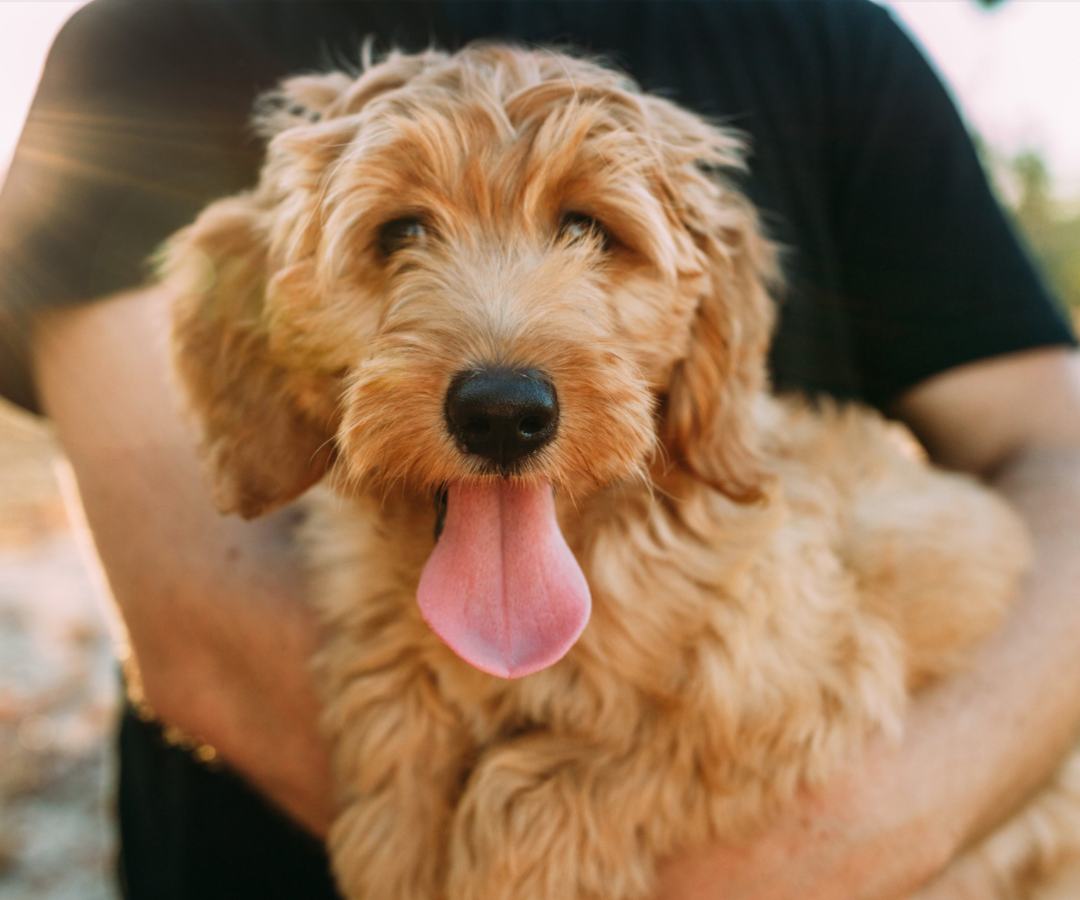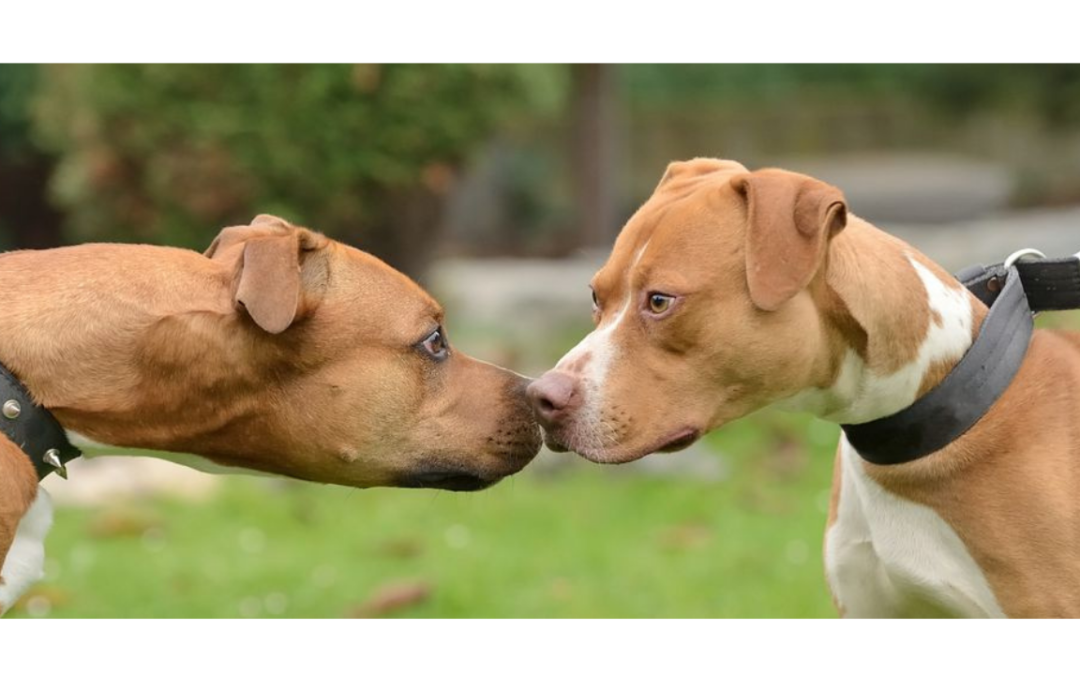[Episode 26]
The Biggest Mistake Reactive Dog Owners Make
If my dog is reactive and meets the dog he’s barking at, won’t that stop the barking once he realizes that dog won’t hurt him?
Having a leash aggressive or reactive dog can be frustrating and overwhelming when you don’t truly understand what’s going on. You’re doing the right thing now by listening to this episode, but don’t skip this. Most people continue to stay overwhelmed because they treat this problem incorrectly. And there is a lot of bad information out there. I don’t want you to fall for it.
Both of my dogs were reactive and walking them brought me to tears. I did so many things wrong and my dogs got worse. I don’t want that to happen to you.
Today, I’m talking to you as someone who struggled with this problem AND someone who helped hundreds of other dog owners solve this problem. Finally finding the solution to this problem is why I became a dog trainer.
When people learn that most reactivity is fear based they want their dog to get over that fear, and rightfully so. It’s stressful, embarrassing and if you’re anything like me you don’t want your dog to live in fear.
But most people address this problem wrong and it makes your problem worse. Most people think that if their dog is afraid then he will “get over” that fear if he just meets a lot of dogs. But that doesn’t work. They make the mistake of having their reactive fearful dog meet other dogs on the walk in the hopes that he will learn there is nothing to be afraid of.
All dog training is science. Back in the 50’s and 60’s and still today scientists have studied dogs in order to understand humans. Dogs are the closest related mammal to humans. This means that there are a lot of scientific studies on these processes.
The scientific process of exposing your dog to his fears in the hopes that he’ll get over it is called Flooding. You can look this up and do your own research.
- Flooding, a technique in behavior therapy in which the individual is exposed directly to a maximum-intensity anxiety-producing situation or stimulus, either described or real, without any attempt made to lessen or avoid anxiety or fear during the exposure.
So, lets say for example that your 5 years is afraid of the water. You want her to get over her fear so that she can enjoy the swimming pool in the backyard. You get her to walk to the edge of the pool and then you push her in.
Once she’s in the water, do you think she’s less afraid or more afraid?
Do you think she trusts you more now or do you think she’ll hide in the house every time you go outside?
Flooding, or forcing a dog to “get over” his fears by forcing him to meet other dogs is the least effective way to change a fear.
One problem is that as humans WE THINK, well I did that and I survived but SURVIVING isn’t the goal. Also our dog isn’t a human and he doesn’t think like us. If you’re afraid of flying and you go on a 3 hour flight and “survive” it doesn’t mean you won’t be full of anxiety during your next flight because you’ll say in your head, I survived that time!
As humans we say, “I know that dog isn’t going to hurt my dog” but YOUR DOG DOESN”T know that and when you force him, you’re breaking down his trust in you.
Your dog trusts you to keep him safe, make good decisions for him and understand what he’s telling you with his body language.
The problem with having your reactive or leash aggressive dog meet other dogs to get over his fear is:
(1) fear isn’t logical. I’m afraid of spiders, I’m bigger than the spider and I’ve killed many of them so why and I am still afraid. You can’t use logic to solve an illogical problem.
(2) Once the fear is already there your dog has formed a CONDITIONED EMOTIONAL RESPONSE. Think of this as a reflex. When I see a spider I will gasp. Internally my heart rate increases, my blood pressure goes up and adrenaline pumps into my body. In more extreme situations, cortisol will also flood my system. I don’t control the gasp or the internal response to that fear.
(3) Your dog isn’t you. We think I’ve done scary things and that’s how I got over the fear, but that isn’t true and covid is a great example.
Let’s go back to the 5-year old that’s afraid of the pool example because dogs have the mental capacity of a 4-year-old. Let’s say that instead of pushing her in the pool, you asked if she could put her feet in the pool, then if she could go in the water up to her knees, then her waist, then could she jump into your arms 2 feet away and so on. You helped her to get over her fear and gradually changed that emotional response from fear to confidence. You were there to support her but didn’t push her beyond her limits. You let her go at her own pace.
The process to help your reactive dog get over his fears is to counter-condition (or change that conditioned emotional response) using desensitization.
There is an exact process and a skill level that is required. The skill is simple but many do it wrong. The process and levels are easy once you know what to do. The Barkaholics program breaks down the skill and process for you so that you can teach your dog to be calm on his walk. It also helps decrease your dogs’ fears so that he can enjoy his walks and his life.
The goal isn’t that your dog meets other dogs. The goal is that he’s calm and confident.
Now that you know the worst way to help your dog “get over” his fears is to force him to go up to other dogs, you can avoid that all together. In fact, you want to avoid having your dog react (bark and lunge) at all so that you can start to teach him what you want him to do instead.
Did you think that meeting other dogs would help your reactive dog? Jump over to our Instagram page and tell me if you’ve done that before.
What’s your puppy survival tip?
Follow us on Instagram to see our daily training lessons.
You’ll learn a lot and get a dog that listens.


FREE MASTERCLASS
3 STEPS TO GET YOUR DOG TO LISTEN
Most struggling dog owners spend hours watching videos and reading blog posts that don’t address the cause of their problem. They waste time focusing on the symptoms and then think their dog is difficult or can’t change when they don’t see results. If you’re ready to finally see change, then sign up and watch this FREE Masterclass.


